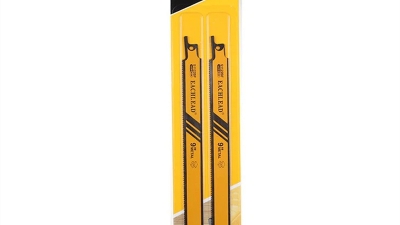Seven Essential Tips for Choosing the Best 24 Inch Reciprocating Saw Blade
Table of Contents
- Understanding the Basics of 24 Inch Reciprocating Saw Blades
- Materials and Coatings: What to Look for in a Quality Blade
- Tooth Design: Choosing the Right Configuration for Your Project
- Blade Thickness and Length: Ensuring Compatibility and Performance
- Selecting the Right Brand: Factors to Consider for Reliability
- Maintenance Tips for Extending the Life of Your Reciprocating Saw Blade
- Enhance Your DIY Projects with S1122BF 9 Inch Reciprocating Saw Blades: A Comprehensive Guide
- FAQS
- Conclusion
- Related Posts
When you're tackling tough cutting jobs, picking the right 24 Inch Reciprocating Saw Blade can really make all the difference in getting clean, efficient cuts. Here at Wenzhou Yichuan Tools Co., Ltd., we’ve been around since 2003, and we totally get how important it is to choose the right saw blade—whether you're a pro or just doing some DIY stuff at home. As a leading maker of electric tool accessories, we're proud of our high-quality reciprocating saw blades that are perfect for all kinds of cutting tasks. In this little guide, I’ll share seven key tips to help you pick the best 24 Inch Reciprocating Saw Blade so your projects come out just right—smooth, precise, and easy. Whether you're gearing up for a remodel, some construction work, or any other cutting job, having the right blade really makes all the difference in making your work easier and more satisfying.
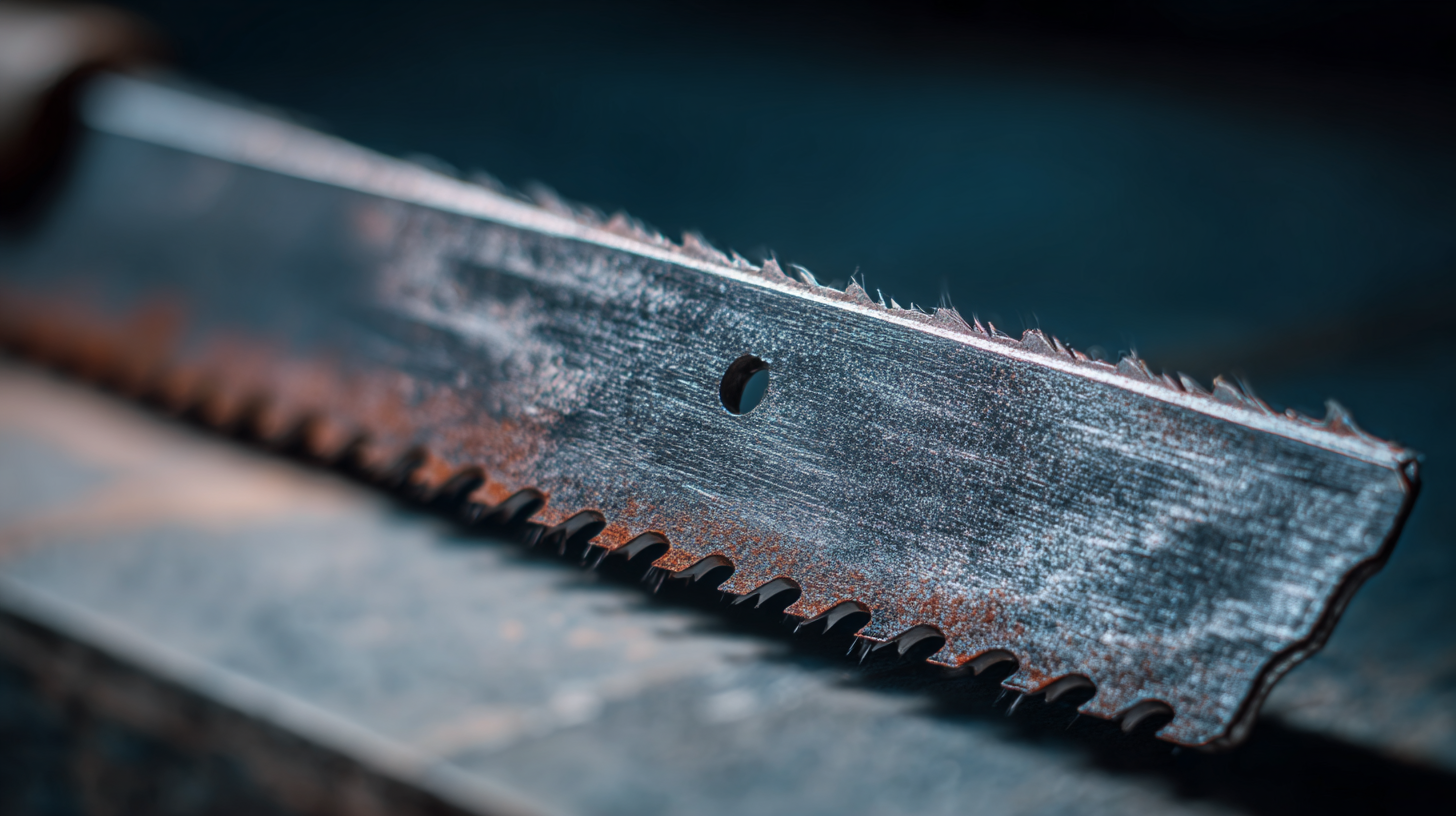
Understanding the Basics of 24 Inch Reciprocating Saw Blades
When you're picking out a 24-inch reciprocating saw blade, it’s really helpful to understand the basics—that way, you’re more likely to get the best cut and avoid any headaches. These blades come in different materials like high-speed steel, bi-metal, and carbide-tipped ones. Each type has its own thing going on; for example, bi-metal blades are pretty flexible and tough, making them perfect for cutting through both metal and wood without breaking a sweat.
Now, when choosing the right blade, keep an eye on the tooth count and design. Generally, more teeth mean a smoother cut—great if you want a clean finish. On the flip side, fewer teeth usually mean a faster cut, especially useful when you're tackling tougher materials. And don’t forget to match the blade to the material you’re working on. For instance, if you’re doing demolition work with mixed materials, a specialized demolition blade with aggressive teeth is a game-changer because it can handle nails, wood, and all that stuff at once. These little details make sure your cuts are efficient and suited perfectly for what you're working on.
Oh, and a quick heads up—make sure your saw can actually fit a 24-inch blade. Not all saws are compatible, so it’s worth double-checking the manufacturer’s specs before you buy. Keeping these basics in mind will help you pick the right blade and make your project run smoother, whether it’s a quick fix or a big job. Happy cutting!
Materials and Coatings: What to Look for in a Quality Blade
When you're picking out a 24-inch reciprocating saw blade, it's really worth paying attention to the materials and coatings—these can make a big difference in how well it performs and how long it lasts. Good blades often use advanced stuff like high-carbon steel or bi-metal, which help boost strength and resist wear and tear. Thanks to newer tech, some blades now come with thin-film metallic glass coatings, which are pretty cool—they help keep the blade sharp longer, cut more smoothly, and reduce friction. That means cleaner cuts and you get more miles out of each blade. From what I've seen, blades coated with zirconium (Zr) or iron (Fe)-based thin films tend to resist dulling way better, so you can get more work done without constantly swapping out blades.
And honestly, understanding how these coatings affect performance is a game-changer. They not only improve cutting ability but also add a layer of durability, especially when dealing with tougher, abrasive materials. Some reports even suggest coated blades last about 30% longer than uncoated ones—that’s a pretty noticeable difference. As folks look for more efficient, reliable tools, manufacturers are really pushing the envelope with innovative coatings that boost both performance and overall satisfaction. If you're serious about your projects, investing in a high-quality, coated reciprocating saw blade is definitely the way to go for getting top results without the hassle.
Comparative Analysis of Material Types for 24 Inch Reciprocating Saw Blades
This bar chart illustrates the consumer preference for different materials used in 24 inch reciprocating saw blades. As shown, Bi-Metal blades received the highest preference, making them a popular choice among users.
Tooth Design: Choosing the Right Configuration for Your Project
So, when you're trying to pick the best 24-inch reciprocating saw blade, one of the most important things to consider is the tooth design. Honestly, that’s what really affects how well and how smoothly the blade cuts. The shape and arrangement of the teeth—whether they’re coarse, fine, or a mix of both—really influences what materials the blade can handle. From what I’ve read and heard from industry folks, blades with around 10-14 teeth per inch are great for getting smooth cuts in metals and plastics. On the flip side, if you’re cutting through wood or drywall, blades with fewer teeth—like 5-8 per inch—will do the job faster.
But it’s not just about how many teeth there are. The shape of the teeth matters too. For example, blades with hooked or angled teeth tend to remove material pretty quickly, making them perfect for demolition work. Meanwhile, straight teeth are better suited for more precise cuts, like when you’re doing renovation stuff. Apparently, picking the right tooth setup doesn’t just boost cutting speed—it also helps the blade last longer, reducing wear and tear by as much as 30%. Honestly, understanding these little details about tooth design is key if you want your cuts to go smoothly and get the best results.
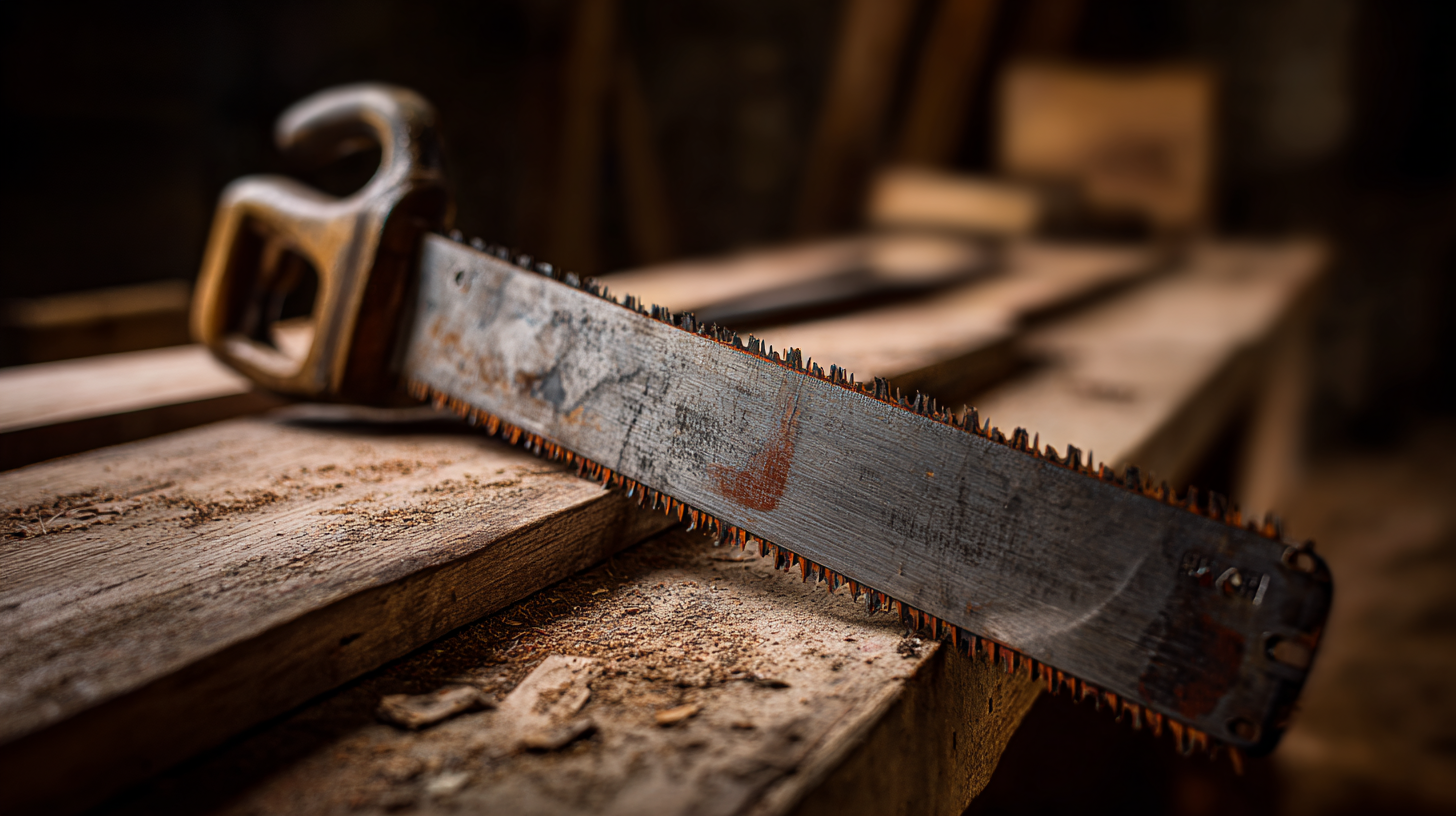
Blade Thickness and Length: Ensuring Compatibility and Performance
Picking the right 24-inch reciprocating saw blade really boils down to understanding a few key things — mainly, the thickness and length of the blade. These details might seem small, but they actually make a huge difference in how well the blade performs and how compatible it is with what you're working on. For example, thicker blades tend to be sturdier—they’re less likely to bend or break when you're tackling tougher cuts. The catch is, they usually need a bit more power to do their thing smoothly, so you wanna make sure your saw can handle that and that it matches the types of materials you’re cutting.
As for the length, a 24-inch blade is perfect when you need to make deep cuts — think demolition jobs or chopping through thick stuff. But here’s the thing: longer blades can feel a bit unwieldy, especially if you’re new at this or doing more delicate work. They require a steady hand and some practice to control. So, when you’re choosing your blade, think about what kind of projects you’re going after and how much precision or maneuverability you need. If you take a moment to weigh both thickness and length, you'll give yourself a much better shot at getting the best performance out of your saw for whatever job you're tackling.
Selecting the Right Brand: Factors to Consider for Reliability
When you're on the hunt for a 24-inch reciprocating saw blade, the brand you pick really matters. I’ve seen firsthand how much a good brand can make a difference—industry folks say about 70% of users link their satisfaction directly to brand quality. Trusted names like DEWALT, Milwaukee, and Bosch are often the go-to because they’re known for lasting longer and working more efficiently, especially when compared to cheaper, no-name options. Honestly, it’s worth splurging a bit on a reputable brand if you wanna avoid annoying breakdowns and get the job done faster.
Also, don’t forget to check out what the blade’s made of and how it’s designed. For example, blades made from high-carbon steel are pretty flexible and resistant to wear, which is great for general use. But if you’re cutting through tougher stuff, carbide-tipped blades tend to last way longer and handle heavy-duty materials like a champ. I came across a survey from ToolBox Buzz, and get this—people who went for premium brands saw approximately 30% less downtime because their blades didn’t shatter or dull as quickly. And honestly, it’s always a good idea to go for blades that come with warranties and glowing reviews. That stuff really says a lot about a manufacturer’s confidence in their product—and your satisfaction too.
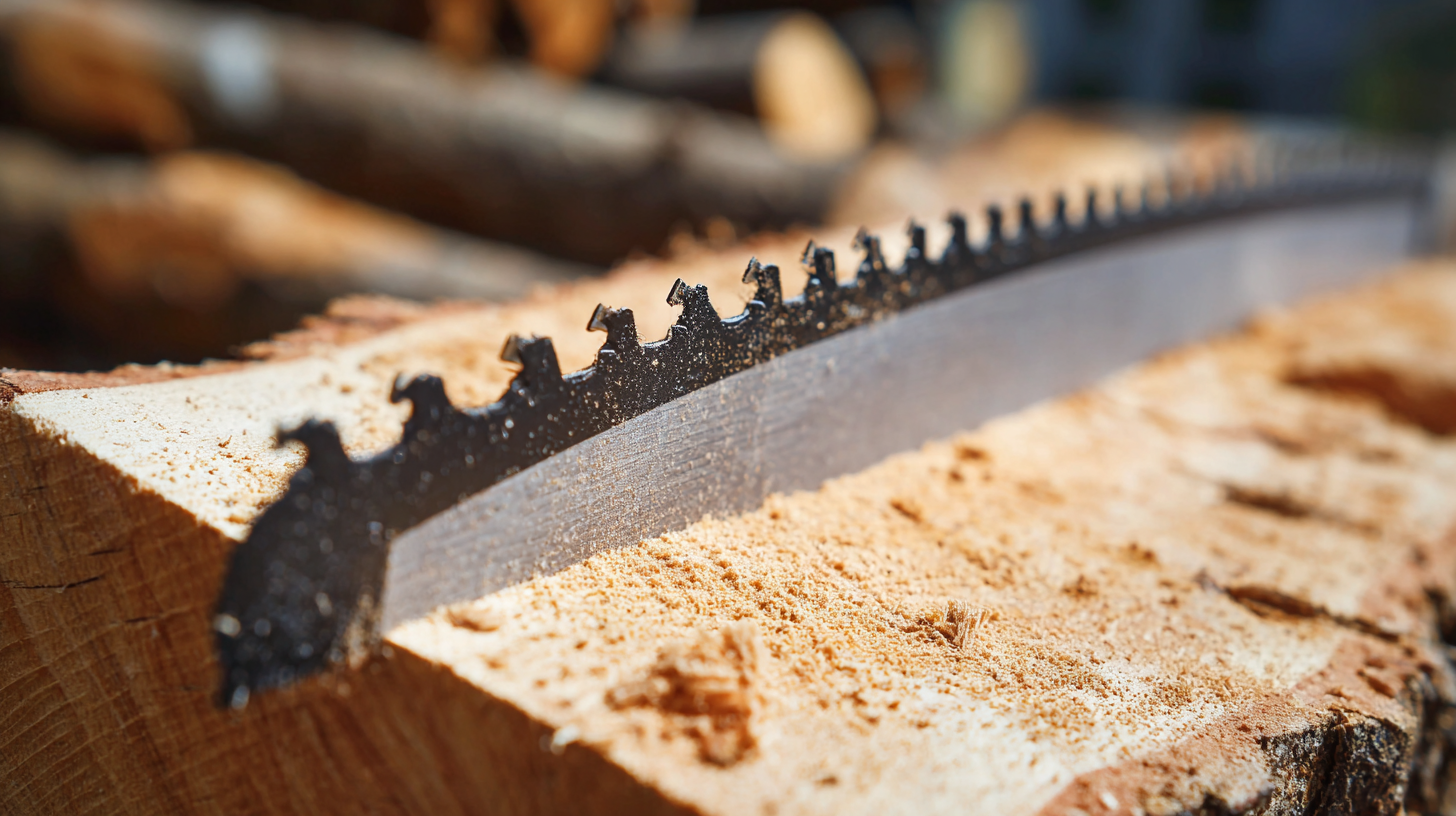
Maintenance Tips for Extending the Life of Your Reciprocating Saw Blade
Taking good care of your reciprocating saw blade is pretty important if you want it to work well and last longer. One of the easiest things you can do is keep it clean—after every use, just give it a wipe down with a clean cloth to get rid of any sawdust, resin, or debris. It might seem simple, but it really helps prevent rust and keeps your cutting performance sharp. If you want to go the extra mile, using a special blade cleaner can help make the surface smoother and improve how well it cuts.
Also, make sure to check your blade now and then for any signs of wear or damage. Look out for cracks, dull teeth, or bends—that’s often a sign it’s time to replace it. Trust me, swapping out a worn blade is way safer than risking injury or messing up your project. Oh, and don’t forget about storage! Keep your blades in a dry spot and use blade guards whenever you can. That way, they stay protected from bouncing around or getting rusted, and they’ll last you longer overall.
Enhance Your DIY Projects with S1122BF 9 Inch Reciprocating Saw Blades: A Comprehensive Guide
When it comes to DIY projects, the quality of your tools can significantly affect the outcome. This is especially true for cutting tasks, where precision and efficiency are paramount. The S1122BF 9 Inch Reciprocating Saw Blades are designed to enhance your metalworking endeavors, making them a must-have for both enthusiasts and professionals alike. With an overall length of 9 inches (225x19x0.9mm) and a robust design that includes 14 teeth per inch, these blades excel in cutting through thick sheet metal, ranging from 3 to 8mm in thickness, as well as solid pipes and profiles from Φ10 to 175mm.
The bi-metal construction of the S1122BF blades ensures durability and longevity, making them capable of withstanding the rigors of heavy use. The blades are engineered with reinforced pair-setting teeth, which significantly improve cutting performance and are tailored for straight cutting, particularly in metal applications. According to industry reports, the efficiency of bi-metal blades is known to enhance cutting speeds by up to 30% compared to traditional carbon steel options. This means that with the S1122BF blades, users can achieve faster cutting times while maintaining high-quality results.
Utilizing these high-performance blades not only elevates the quality of your DIY projects but also allows for greater versatility. Whether you are working on home improvement tasks, crafting metal sculptures, or engaging in more complex industrial applications, the S1122BF 9 Inch Reciprocating Saw Blades are designed to meet your needs. Embrace the precision and reliability these blades offer, and watch your projects come to life with unprecedented ease.
FAQS
: The tooth design of a reciprocating saw blade directly impacts its performance and efficiency, affecting its cutting capabilities across various materials.
Blades with a high tooth count (10-14 teeth per inch) are ideal for smooth cuts in metals and plastics, while those with a low tooth count (5-8 teeth per inch) are better for rapid cuts through wood and drywall.
Tooth geometry, such as hooked or angled designs, allows for quick material removal, making them suitable for demolition, while straight-cut teeth provide better precision for renovation tasks.
Choosing the appropriate tooth configuration can enhance cutting speed and significantly reduce wear on the blade, potentially prolonging its lifespan by up to 30%.
The brand significantly influences reliability and performance; reputable brands often provide better durability and effectiveness compared to lesser-known alternatives.
High-carbon steel blades offer flexibility and wear resistance, while carbide-tipped blades are preferred for longer life and cutting tough materials.
Users reported a 30% reduction in downtime due to blade failure when choosing premium brands over budget options.
Consumers should seek blades that come with manufacturer warranties and positive customer feedback as indicators of a brand's commitment to quality and satisfaction.
Hooked or angled teeth are suited for demolition work, while straight-cut teeth are better for tasks requiring precision cuts in renovations.
Understanding the nuances of tooth design helps users achieve optimal performance in reciprocating cutting tasks by selecting the most effective blade configuration.
Conclusion
Picking the right 24-inch reciprocating saw blade? Honestly, it’s a pretty big deal if you want your projects to turn out just right — whether you’re a pro or just into DIY stuff on weekends. First off, it helps to get the hang of the basics: stuff like what materials the blades are made of and any coatings that boost their longevity. When you’re shopping around, look for blades that have the right tooth design for what you’re cutting — not all blades are created equal, after all. And don’t forget to consider the blade’s thickness and length — you need to make sure everything fits your saw and that you'll get the cut you’re aiming for.
As you check out different brands, reliability should be a top priority — it can really make a difference in how smoothly your work goes. And a little maintenance from time to time can seriously extend the life of your blade, keeping it in your toolbox as a trusted go-to tool. At Wenzhou Yichuan Tools Co., Ltd., we’re all about high-quality power tool accessories — especially top-notch reciprocating saw blades that can handle whatever cutting job you throw at them.
Related Posts
-
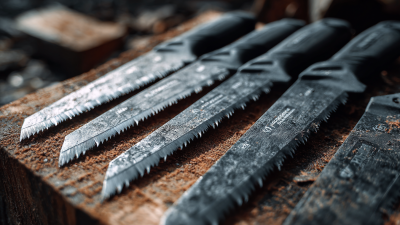
Unlocking the Future of Best Reciprocating Saw Blade Set Market Insights and Usage Guide to 2025
-
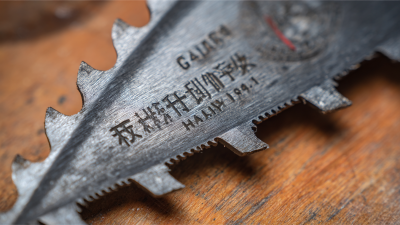
Discover the Superior Quality of China's Best Double Sided Reciprocating Saw Blade Manufacturing
-

Global Trust in Chinese Manufacturing Discover the Best Sawzall for Cutting Metal
-

Unlocking Efficiency with the Best Reciprocating Saw Blades Screwfix for Global Procurement Success
-

5 Essential Reasons to Choose the Best Blades For A Jigsaw
-

Understanding the Features and Applications of the Best Carbide Sawzall Blade for Every Project
Blog Tags:






